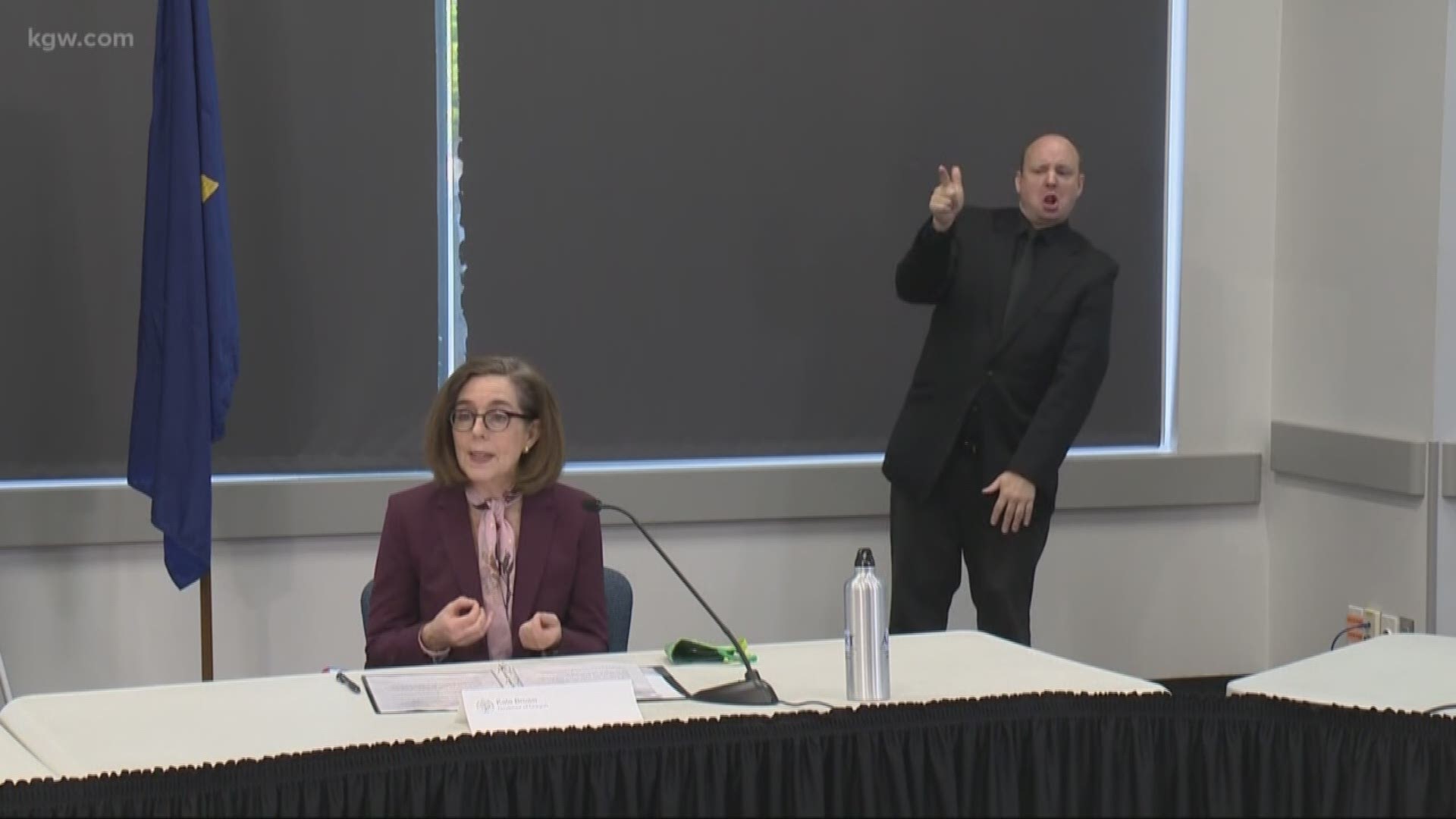PORTLAND, Ore. — Oregon Gov. Kate Brown on Friday announced the state’s plans for COVID-19 testing and contact tracing as part of her framework for reopening the state.
The state plans to add 600 contact tracers for COVID-19 outbreaks. Some positions will be paid while others will be volunteer. Oregon Health and Science University (OHSU) will also create a team of medical students for contact tracing.
“A strategy of testing and tracing helps us identify who has the disease and who may be at risk of infection - knowledge that is incredibly powerful as we look to reopen," said Brown.
The governor said this is key to containing the virus, and preventing it from spreading quickly and widely. Contact tracers will be bilingual and multi-cultural to help communities of color and tribal communities who are particularly vulnerable to this virus.
In the press conference Friday morning, Gov. Brown said Oregon's strategy for re-opening focuses on testing and tracing to diagnose those who are sick as well as isolating the virus. The state's strategy includes the following:
- Testing should be available for any Oregonian showing symptoms of coronavirus. If they are displaying known signs, they should be able to get tested.
- Testing must be available for people in vulnerable living settings, such as nursing homes and prisons.
- We need ongoing widespread randomized testing to know where the disease may be hiding in our state and monitor at-risk populations, such as communities of color and tribal communities.
To accomplish the first two objectives, Brown said Oregon needs to have the right kind of testing everywhere in the state. To that extent, leaders of each hospital system in Oregon have agreed to a unified approach for managing testing across the state.
The Oregon Health Authority updated its guidance to expand testing capacity. If a provider learns someone has mild symptoms, they are advised to give that person a coronavirus test. OHA initially took a cautious approach to testing focused on vulnerable populations and those most at-risk. State health officer Dr. Dean Sidelinger says he is confident the state can meet its goal of 15,000 tests per week.
On Friday, Brown also announced a new partnership with OHSU called "The Key to Oregon" study. The statewide study will invite 100,000 pre-selected Oregonians to volunteer to participate, starting May 11, with invitations sent in the mail. The study will track participants' temperatures and symptoms over a 12-month period. Ten-thousand of these participants will get at-home coronavirus testing kits. (Story continues below)
The governor says "this program is a game-changer" and will give the state a more accurate understanding of the true infection rate across Oregon. It will also allow public health officials to make data-driven decisions to manage until a vaccine is developed.
The governor's framework also calls for a decline in COVID-19 cases and for adequate personal protective equipment (PPE) to protect health care workers and first responders.
Earlier this week, Brown told leaders she wants detailed reports from counties that include approval from their public health leaders. After that is done, her administration will assess the risk of lifting economic and social restrictions.
The first step to reopening the state took effect Friday. Non-urgent medical procedures were allowed to resume at medical and dental facilities across the state.
On Friday, Brown said her hope is that some rural counties without cases or hospitalizations can begin the process of reopening as soon as May 15.
The governor said physical distancing will remain a part of our daily lives until there is a treatment for the disease or the security of a vaccine. Oregonians will also be asked to wear masks in public to protect others and continue to practice good hygiene.
"We won't be able to open Oregon quickly. It will happen much more slowly than any of us would like," Brown sad.
Drafts of Brown’s plans to restart Oregon’s economy show a three-phase approach, with more restrictions being loosened with each phase. There will also be ongoing evaluations by Brown’s administration and health officials to make sure a resurgence of COVID-19 hasn’t occurred due to restrictions being eased.
Dr. Sidelinger said projections show the disease will likely increase in Oregon as the state opens up because people will have more contact with each other. Everyone has a role to play in preventing the spread of the virus by staying at least six feet away from others and practicing good hygiene.
Gov. Brown on Friday also extended the state of emergency for Oregon through July 6. This declaration allows the Oregon Health Authority to deploy emergency volunteers, provide guidance to health care providers and issue guidelines for businesses among other items listed in the executive order.
More than 360,000 Oregonians have filed unemployment claims over the past six weeks and people are looking to get back to work as soon as the governor gives the go-ahead. Brown has repeatedly said she recognizes the economic hardship and sacrifices Oregonians have made during the pandemic but she will continue to follow guidance of health officials to determine when restrictions should be lifted.
As of Friday, there are a total of 2,579 COVID-19 cases in Oregon, including 104 people who have died.

